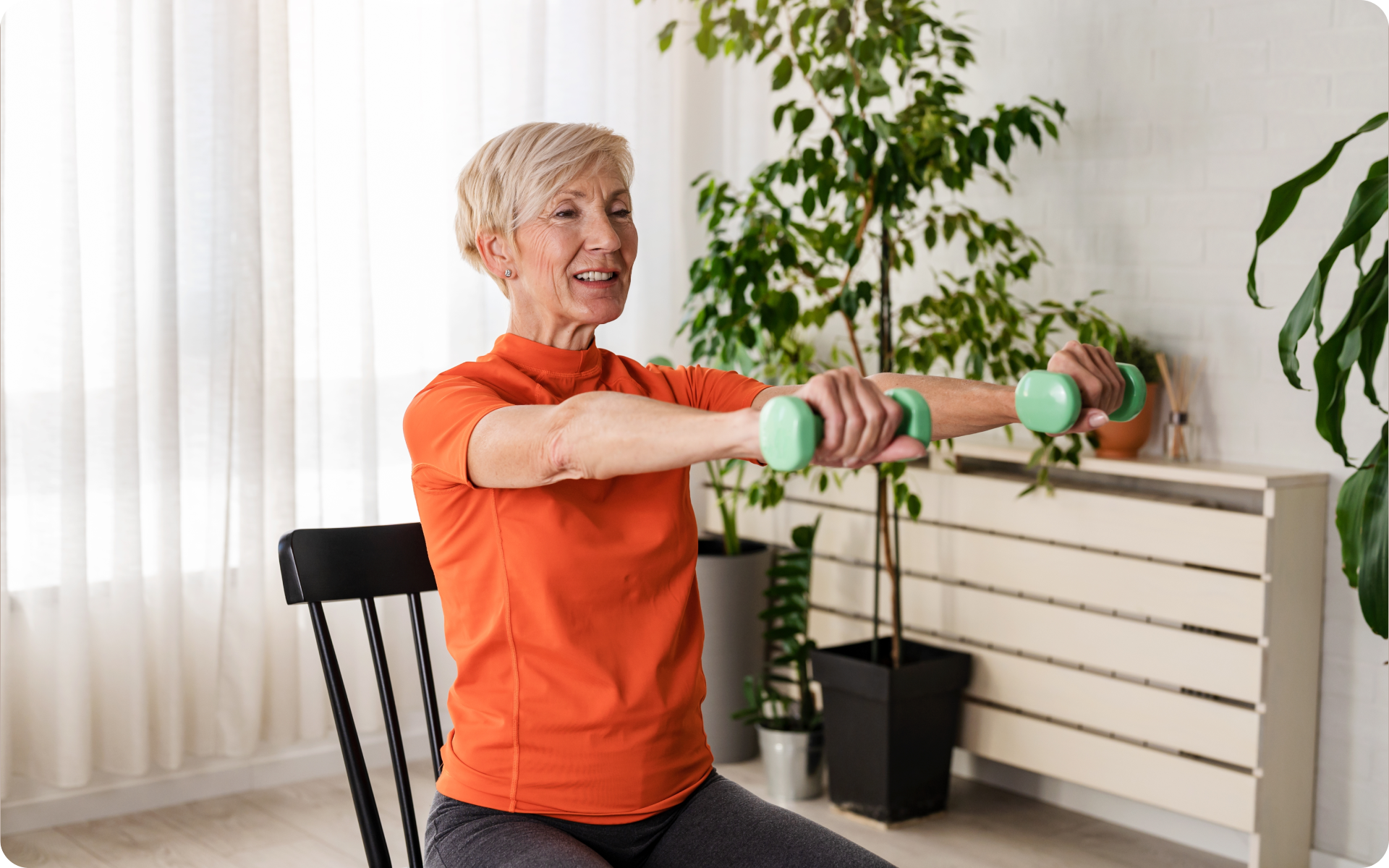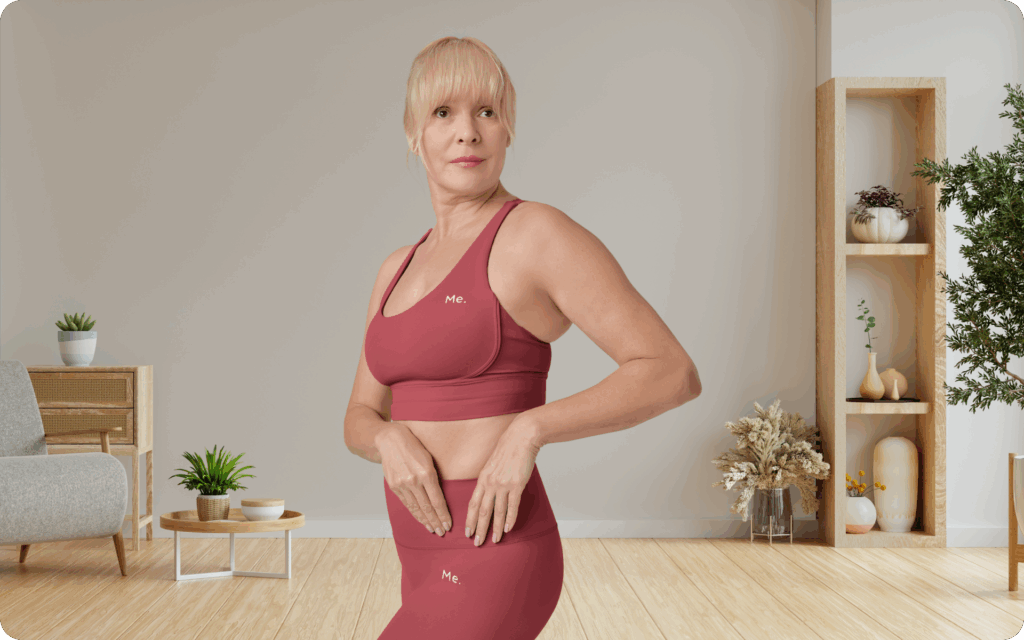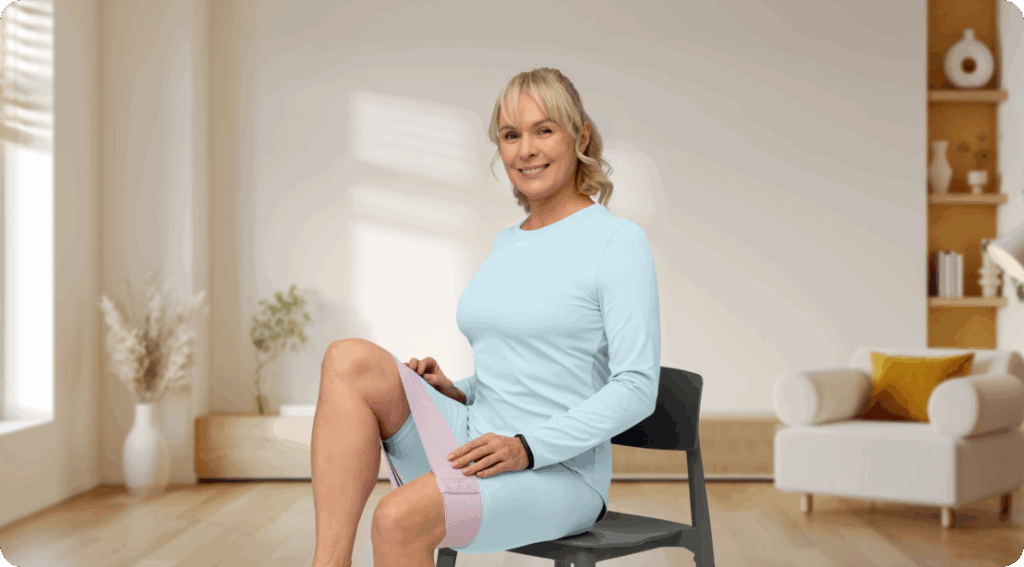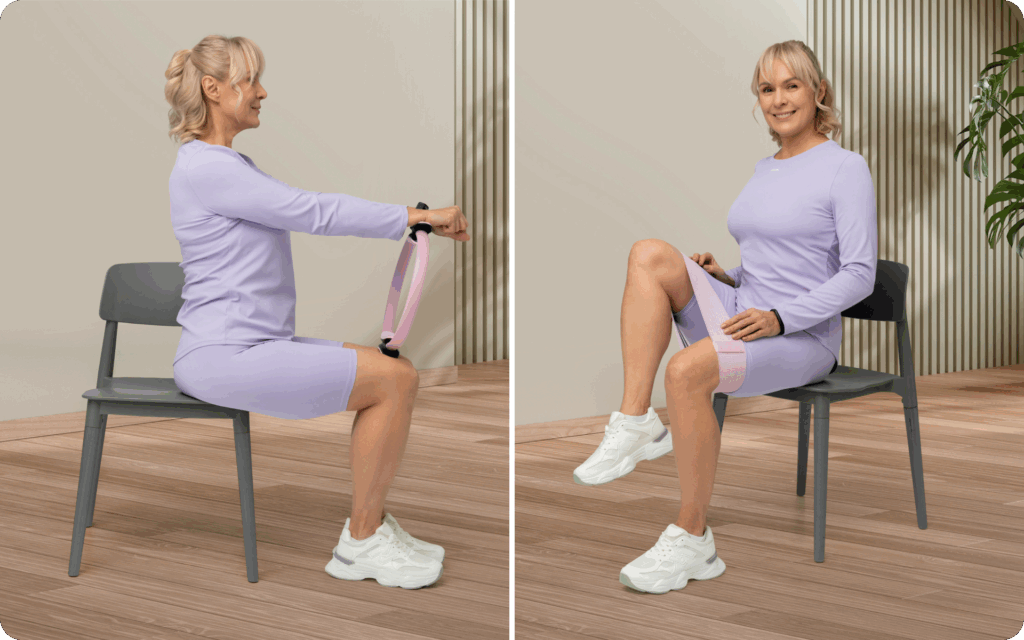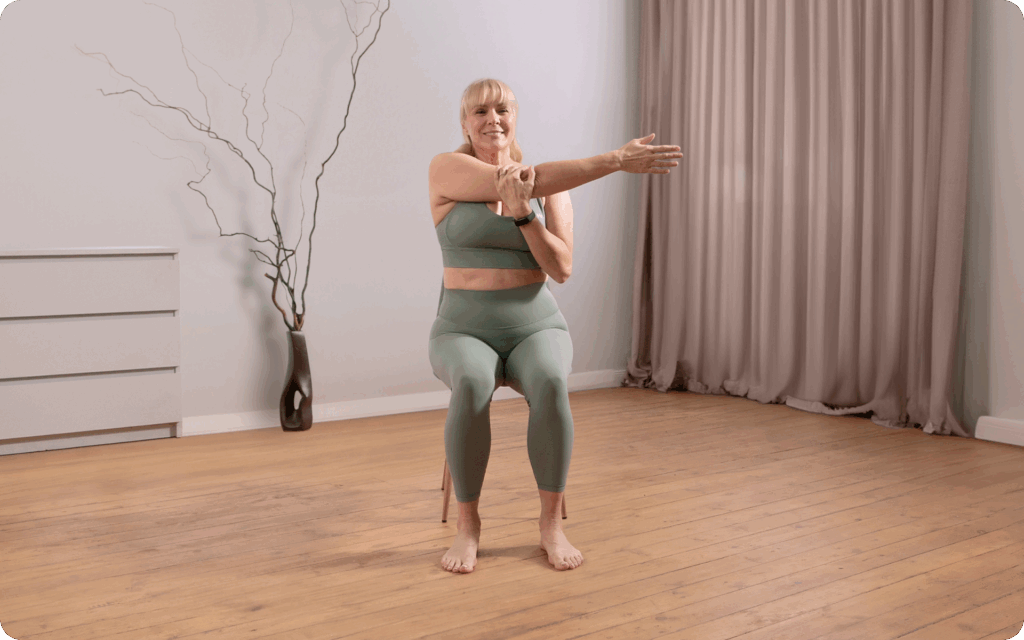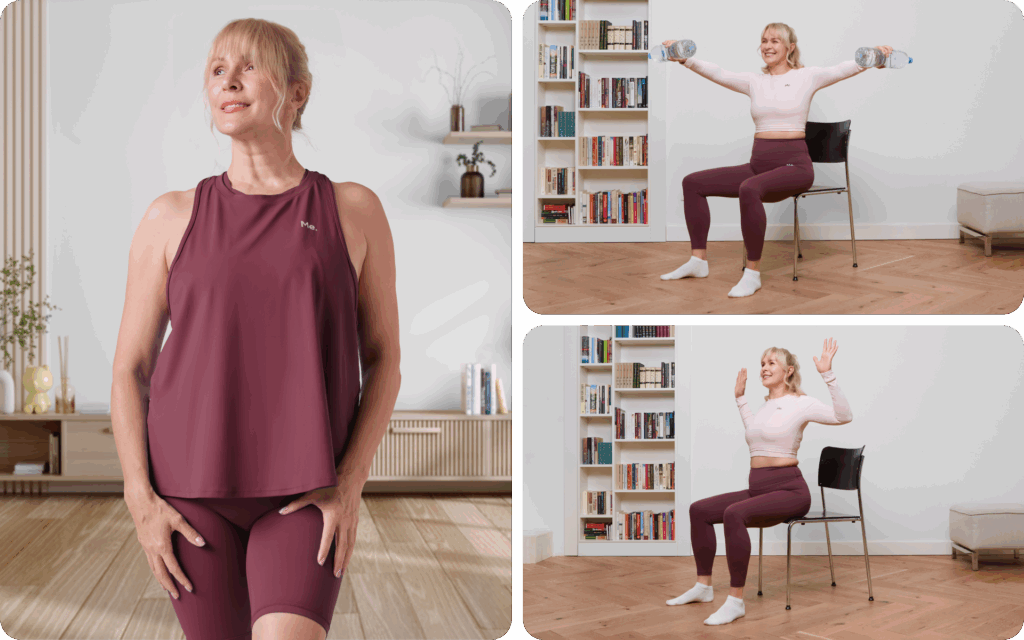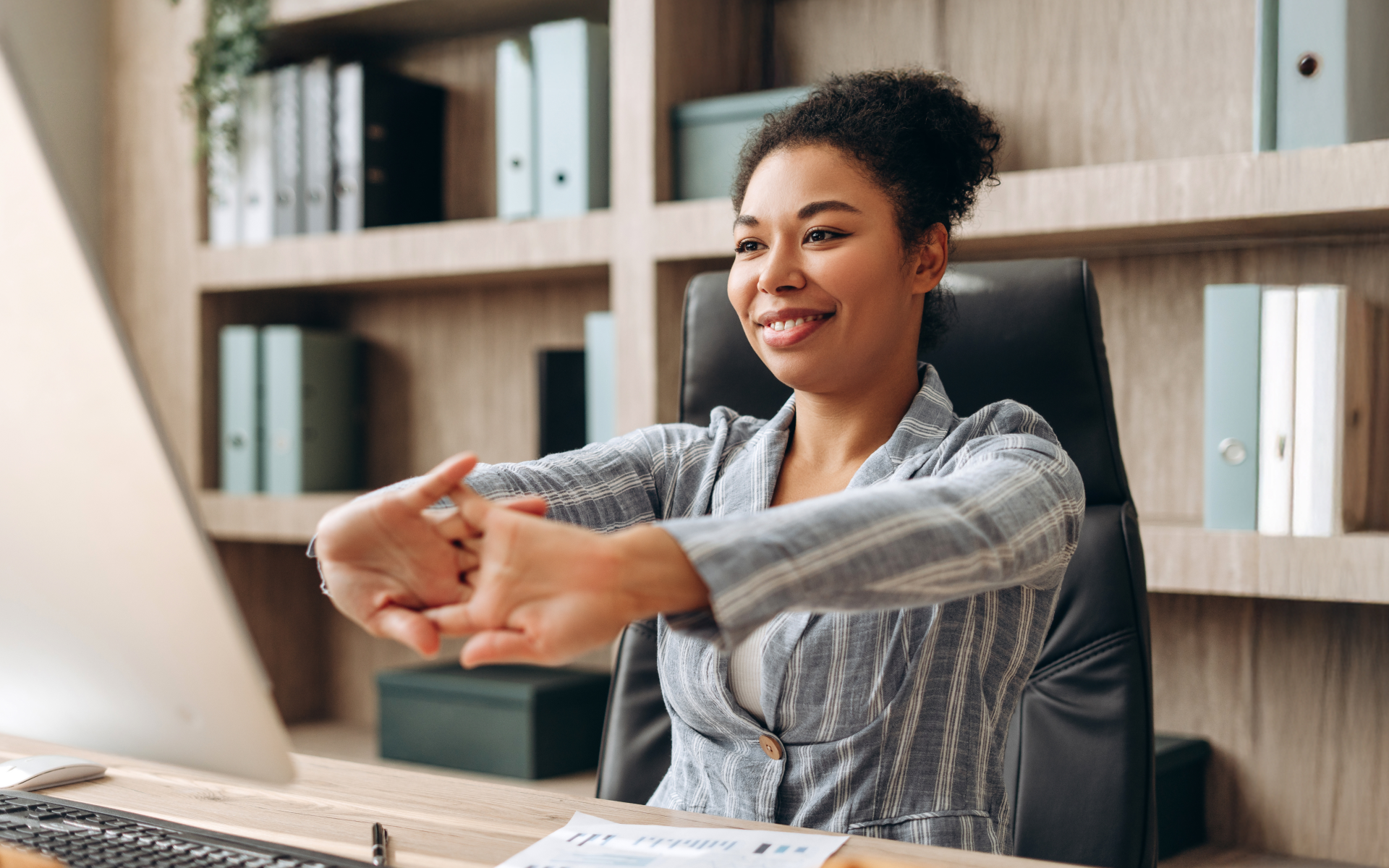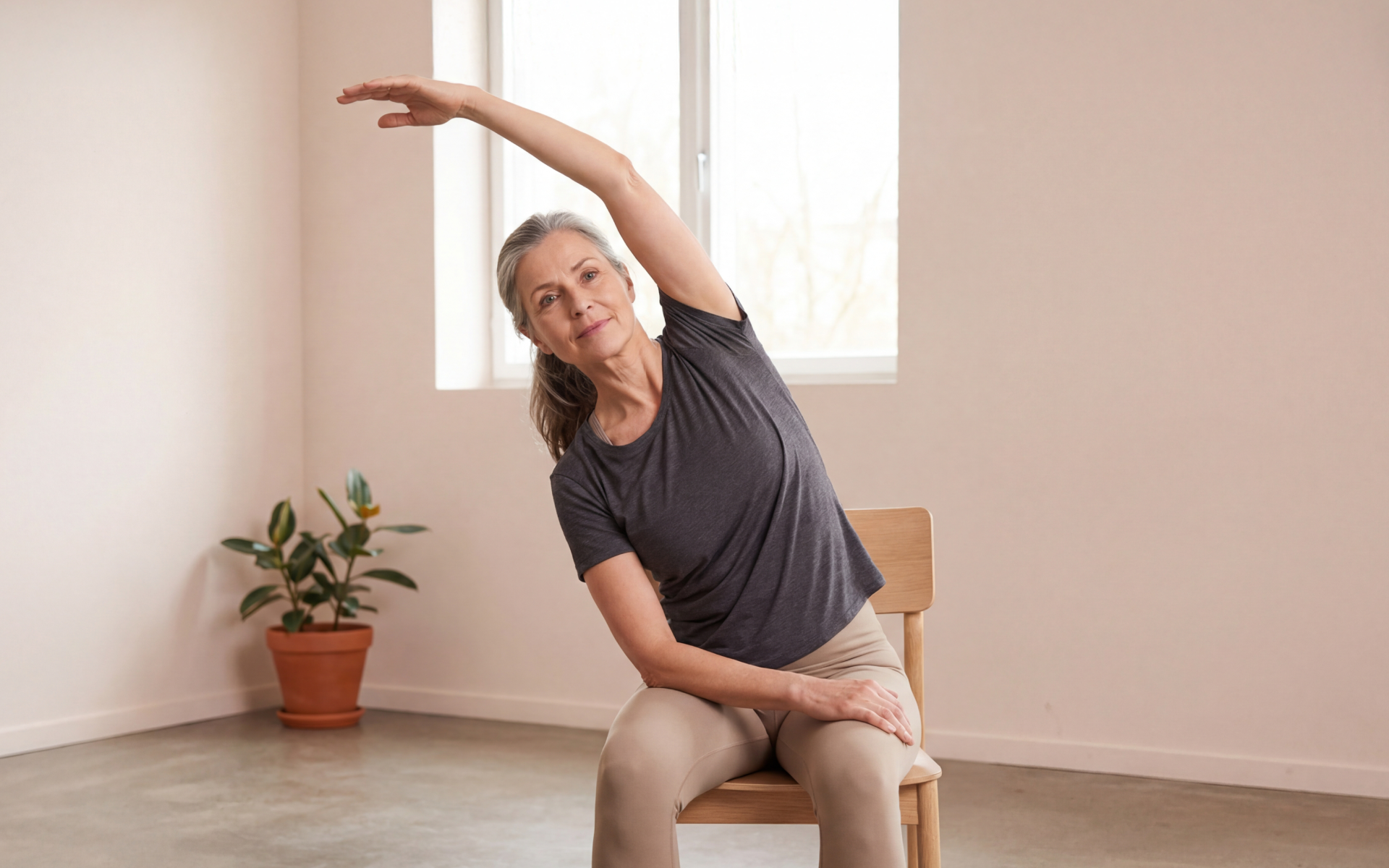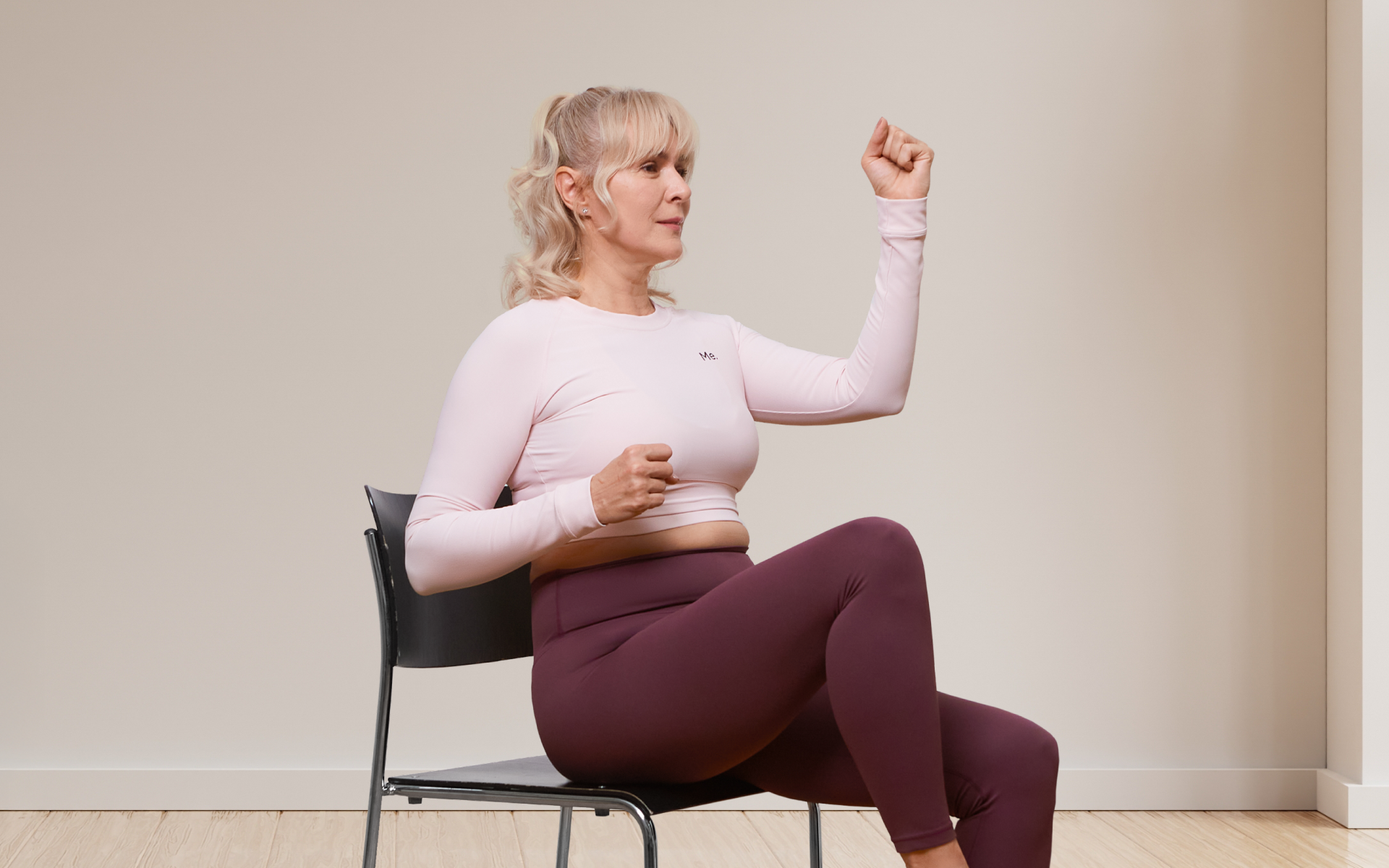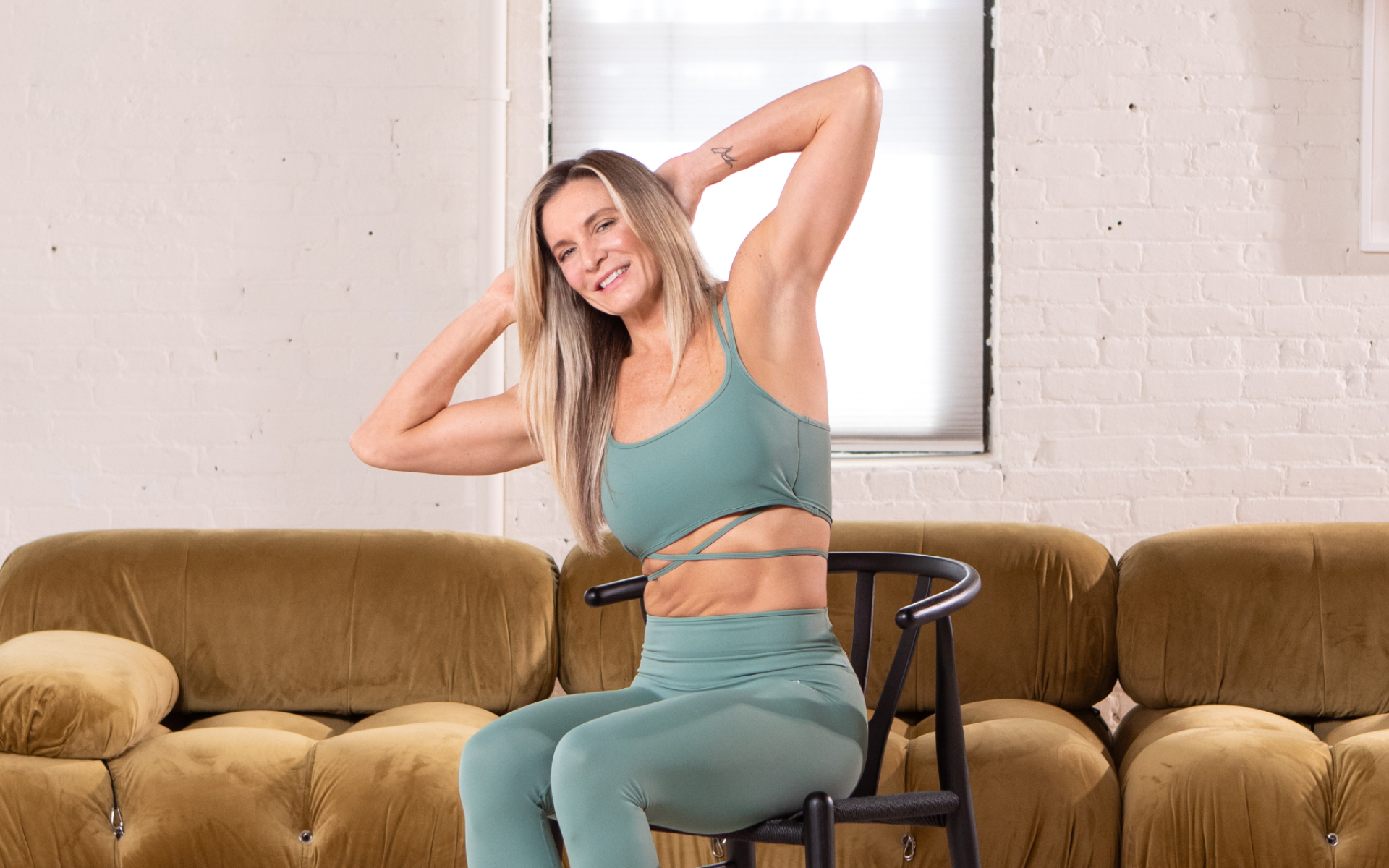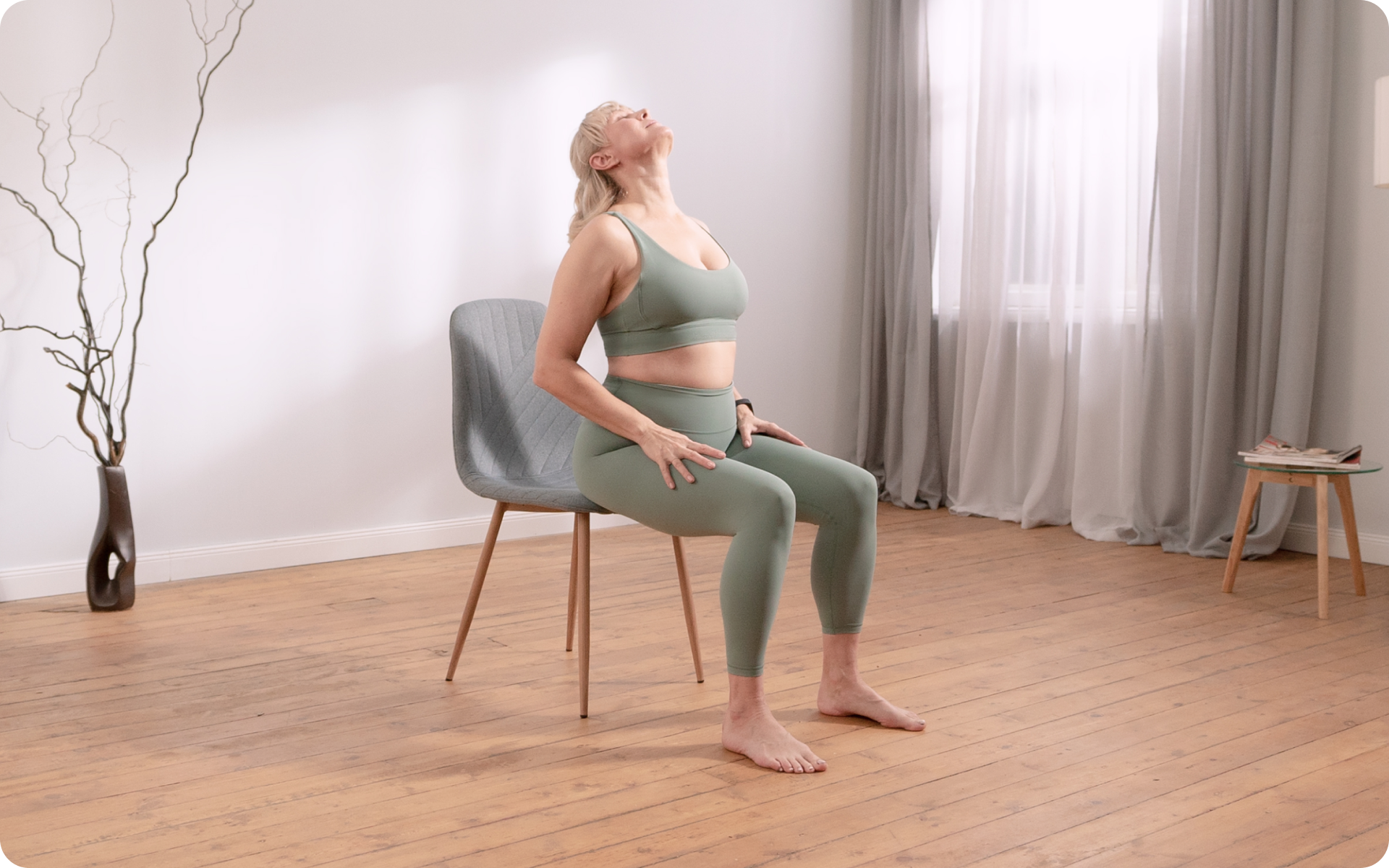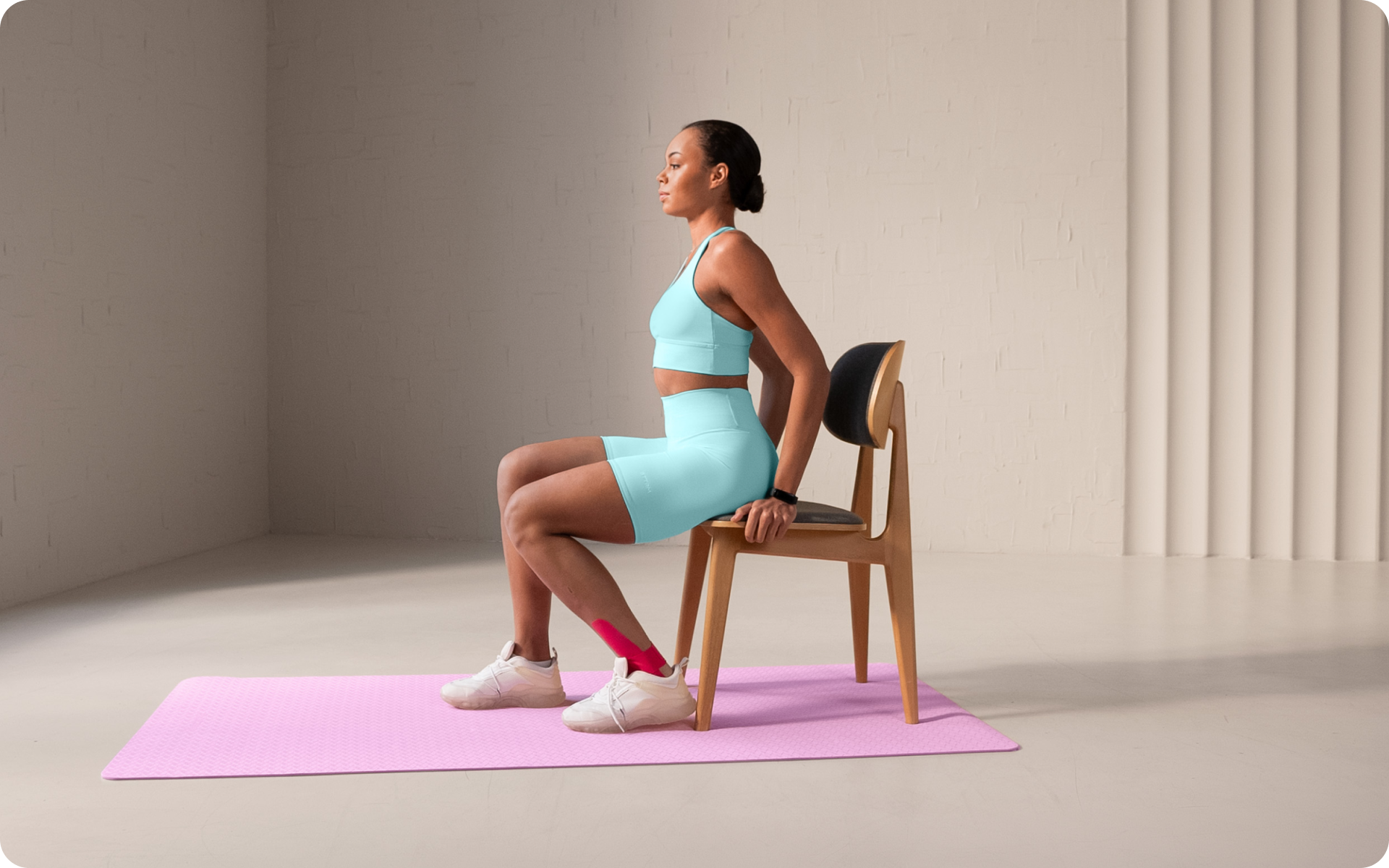The practice of yoga is believed to have been around since the Indus Valley Civilization, which was roughly 3,300 to 5,300 years ago. While yoga was originally a spiritual practice that helped people achieve the highest level of consciousness, the practice has since evolved and is now used for the physical, mental, and social aspects of life (1).
In older adults, this practice has been proven to help improve the well-being, mobility, mood, cognition, mental health, flexibility, and range of motion of seniors, and it may also help with disease prevention and treatment (2, 3, 4).
Chair yoga is a modified version of traditional yoga that’s done while seated or standing and using a chair for support. This variation is often used by seniors or people with mobility issues, allowing them to participate in this exercise despite physical limitations.
A good chair yoga sequence for seniors can help older adults participate in the workout and reap its multiple benefits. Read on to find out how best to create a beginner chair yoga for seniors sequence and the best poses to add to it.
What Is an Easy Chair Yoga for Seniors Sequence?
An easy chair yoga for seniors sequence is a simple and gentle series of step-by-step seated or chair-supported yoga poses that are designed to help with relaxation, improved flexibility, or strength in older adults.
Sequences are common in yoga and they are essentially a deliberate arrangement of yoga asanas (aka poses) and breathing techniques to create a cohesive and purposeful flow.
How to Sequence a Chair Yoga Class for Seniors
According to a recent study, researchers advise that yoga instructors who want to teach older adults this practice should focus on three key areas, including (5):
- Adapting poses for the demographic
- Incorporating supportive props
- Fostering a welcoming environment that encourages participation
By opting for chair yoga, you’ve already completed the first two requirements, as this variation is easier for most older adults as compared to traditional yoga. But what about the exercise portion itself?
As previously mentioned, a yoga sequence is deliberately arranged so that it can have a cohesive flow to it. When it comes to making the best chair yoga for seniors sequence, you should ensure that your movements all flow into each other. The first movement should flow into the next, or rather, one pose is set up for easy transition into the next.
Whether you’re looking to simply pep up your fitness routine, jazz up your diet with mouth-watering low-calorie recipes or want to get your act together and significantly drop that number on your scale – BetterMe: Health Coaching app has got you covered! Improve your body and revamp your life!
Also remember to:
- Start with the opening. Also known as centering, this period is dedicated to short meditation or breathwork while seated or lying down. The point of this is to help clear the mind and increase self-awareness before the class starts.
- Step 2 is a simple warm-up to help prepare the body and mind for the upcoming movements, improve performance, and help improve blood and oxygen flow throughout the body and muscles (6, 7)
- Move straight into your chosen sequence of poses. As mentioned above, you should structure the session in a way that each pose easily transitions into the next.
For example, in traditional yoga, to get into downward dog, you start by getting into the tabletop pose, followed by the plank, before lifting the hips up and back and pressing your heels toward the floor, which puts you in downward dog.
When coming up with your seated yoga poses sequence for your class, structure the asanas so they easily transition into each other, as with the example above. Start with easy poses and slowly increase the intensity to harder poses.
- End with cool-down asanas to help body temperatures and heart rates drop slowly. Remember that cool-downs are recommended after every workout session as they help minimize the risk of injury, fainting, and sore muscles (8, 9).
A yoga sequence isn’t just good for seniors. Here’s a good yoga sequence for beginners.
Read more: 9 Chair Yoga Poses For Seniors To Do At Home
What Are the Steps for Chair Yoga for Seniors?
As shown in the section above, the steps for a chair yoga sequence for seniors should start with centering, then a warm-up session, move into the main workout session, which should be made up poses that naturally flow into each other, before ending in a cool-down session with simple asanas that allow for stretching, relaxation, and slow breathing.
Does Chair Yoga for Seniors Really Work?
Yes, it does. Chair yoga is a modified and easier variation of traditional yoga, but that doesn’t mean that it’s any less effective. Seniors who do this variation can achieve the same benefits as with traditional yoga – a fact that has been proven by scientific research.
Several studies have shown that this yoga variation can help with the treatment and management of pain in older adults, improve mobility, functional fitness, balance, flexibility, and range of motion, enhance mental health and muscular strength, and reduce musculoskeletal stiffness (13, 14, 15, 16, 17).
What Is the Number One Exercise Seniors Should Do?
There is no single exercise that stands above the rest. Seniors are encouraged to do a variety of exercises to help them with healthy aging. According to the National Institute on Aging, there are three types of exercises that all older adults should be encouraged to engage in (18):
- Aerobic Exercises
Also known as endurance or cardio workouts, these exercises are good for your heart, lungs, and circulatory system. Consistency with these types of exercises can help reduce the risk of common ailments in older adults, such as diabetes, certain cancers, and heart disease. Easy endurance exercises for older adults include walking, swimming, cycling, dancing, and water aerobics.
Intense sweat sessions, working weight loss tips, lip-smacking recipes come in one package with the BetterMe: Health Coaching app—all at your fingertips, start transforming your life now!
- Strength/Resistance Training
If cardio largely targets your heart, lungs, and circulatory system, strength training (aka weight lifting) largely targets the muscles. These exercises help work the muscles, which makes them bigger and stronger.
Many older adults are afflicted by sarcopenia, which is age-related muscle loss that, when left unmitigated, progresses and eventually leads to decreased physical performance, falls, fractures, and reduced quality of life (19).
Strength training, through simple bodyweight workouts, light free weights, the use of resistance bands, or any chore that requires lifting heavy items, can help mitigate sarcopenia and improve the muscle mass and strength, as well as the quality of life of many elderly people.
- Balance Exercises
Research has shown that your balance gets worse as you age (20, 21). Loss of balance increases the risk of falls and fractures in old age and reduces quality of life. By doing balance workouts, you’re able to improve your quality of life and reduce the risk of falling and fractures.
Tai chi, Pilates, and yoga are great examples of balance workouts. A seated yoga sequence is both a seated balance and strength training workout, so by engaging in the workout, you essentially kill two birds with one stone.
How Many Poses Should Be in a Chair Yoga Sequence for Seniors?
There’s no one answer for this. Some sources state that a chair yoga sequence should have 10-20 poses, while others state that 8-15 poses are enough. We would say that the number of poses in your chair yoga sequence for beginners, especially seniors, should be based on the people in your class and their abilities.
If you have a chance to interact with the group before the class starts, you can assess their strength, mobility issues, and level of fitness. All of these factors will help you create/modify your sequence and number of poses to better fit these seniors.
However, to be on the safer side, we suggest starting small. Start with 8 simple poses and see how they respond to them. This will help you come up with a better plan next time.
Read more: Chair Yoga for Seniors Benefits: Little-Known Advantages of This Modified Exercise
What Is a Gentle Chair Yoga for Seniors Sequence to Begin with?
Here’s a sequence that’s gentle and relatively safe for most older adults. You’ll need a sturdy chair with no wheels and preferably no armrests.
- Seated centering – Take 1-5 minutes to sit tall with your feet flat on the ground. Inhale deeply through the nose and exhale slowly, allowing your body and mind to relax.
- Neck rolls – Lower your right ear to your shoulder and roll your chin to your chest and to the left.
- Seated cat-cow – Inhale and arch your back, bringing your chest forward. Hold then exhale, rounding your spine and bringing your chin to your chest.
- Seated side stretch – Reach your right arm overhead and lean your body to the left. Hold this position for 3 breaths, come back to the center, switch sides, and repeat.
- Seated marches – While sitting tall, lift your knees alternately as you would if you were doing standing marches. You can keep your arms at your sides, holding the seat of the chair, or swing them if you feel comfortable.
- Seated warrior 1 – With your foot on the floor, extend your right leg to the back and lift both arms above your head. Hold this position for 3 breaths and then bring your arms down and your foot back to the front side. Switch sides and repeat the movement on the other side.
- Seated forward fold – Hinge at the hips to lie on your thighs and drop your hands to your feet. Keep your back as flat as possible.
- Seated meditation – Place your hands on your thighs, close your eyes, and breathe deeply for 1-2 minutes.
Yes, it does. As previously mentioned, this practice can help with pain management, better balance and mobility, increased muscle strength and functional fitness, and overall improved quality of life. The mountain pose is the most basic yoga pose. It’s the base for many standing yoga poses and it emphasizes posture and alignment, which are essential in yoga. Yes, they are. Like regular bodyweight squats, they help improve your lower body strength as well as your balance and mobility. Don’t eat a big meal right before your class, as this could make you sluggish or sleepy during the session. In addition, always make sure to take note of any pain or discomfort you feel before class and relay this information to your instructor. They can then modify poses for you or ask you to sit out the class so as not to aggravate the issue.Frequently Asked Questions
Does chair yoga help seniors?
What is the most basic yoga pose?
Are chair squats effective for seniors?
What should you not do before yoga as a senior?
The Bottom Line
A chair yoga for seniors sequence is a great way to make older adults more physically active in a low-impact and logical way. Increased physical activity in this demographic is essential for their physical health, mental health, and independence. Encourage them to try this exercise and also ask them not to push themselves beyond their limits or ignore any pain.
DISCLAIMER:
This article is intended for general informational purposes only and does not serve to address individual circumstances. It is not a substitute for professional advice or help and should not be relied on for making any kind of decision-making. Any action taken as a direct or indirect result of the information in this article is entirely at your own risk and is your sole responsibility.
BetterMe, its content staff, and its medical advisors accept no responsibility for inaccuracies, errors, misstatements, inconsistencies, or omissions and specifically disclaim any liability, loss or risk, personal, professional or otherwise, which may be incurred as a consequence, directly or indirectly, of the use and/or application of any content.
You should always seek the advice of your physician or other qualified health provider with any questions you may have regarding a medical condition or your specific situation. Never disregard professional medical advice or delay seeking it because of BetterMe content. If you suspect or think you may have a medical emergency, call your doctor.
SOURCES:
- Historical and Current Perspective of Yoga: An Overview (2023, researchgate.net)
- Effects of yoga on well-being and healthy ageing: study protocol for a randomised controlled trial (FitForAge) (2019, pmc.ncbi.nlm.nih.gov)
- Yoga for Healthy Aging: Science or Hype? (2021, pmc.ncbi.nlm.nih.gov)
- The impact of yoga on aging physiology: A review (2024, sciencedirect.com)
- Empowering older adults through yoga: Strategies for effective instruction (2025, sciencedirect.com)
- Effects of warming-up on physical performance: a systematic review with meta-analysis (2010, pubmed.ncbi.nlm.nih.gov)
- BENEFITS OF WARMING UP IN SPORTS – AN ANALYTICAL STUDY (2018, ijcrt.org)
- Warm up and cool down activities (2024, nhsinform.scot)
- Warm Up, Cool Down (2024, heart.org)
- Editorial: Yoga for pain relief (2024, frontiersin.org)
- Yoga and pain: A mind-body complex system (2023, frontiersin.org)
- Effectiveness and safety of yoga to treat chronic and acute pain: a rapid review of systematic reviews (2021, pmc.ncbi.nlm.nih.gov)
- A Pilot Randomized Controlled Trial of the Effects of Chair Yoga on Pain and Physical Function Among Community-Dwelling Older Adults With Lower Extremity Osteoarthritis (2016, agsjournals.onlinelibrary.wiley.com)
- Yoga for Healthy Aging: Science or Hype? (2021, pmc.ncbi.nlm.nih.gov)
- Effect of Chair Yoga Therapy on Functional Fitness and Daily Life Activities among Older Female Adults with Knee Osteoarthritis in Taiwan: A Quasi-Experimental Study (2023, pmc.ncbi.nlm.nih.gov)
- The Effectiveness of Chair Yoga in Older Adults: A Literature Review (2023, researchgate.net)
- Perceptions and experiences of chair-based yoga by older adults with multimorbidity – a qualitative process evaluation of the Gentle Years Yoga randomised controlled trial (2025, bmcgeriatr.biomedcentral.com)
- Three Types of Exercise Can Improve Your Health and Physical Ability (2025, nia.nih.gov)
- Sarcopenia (2025, ncbi.nlm.nih.gov)
- Lifespan data on postural balance in multiple standing positions (2020, pubmed.ncbi.nlm.nih.gov)
- Age-related changes in gait, balance, and strength parameters: A cross-sectional study (2024, journals.plos.org)
